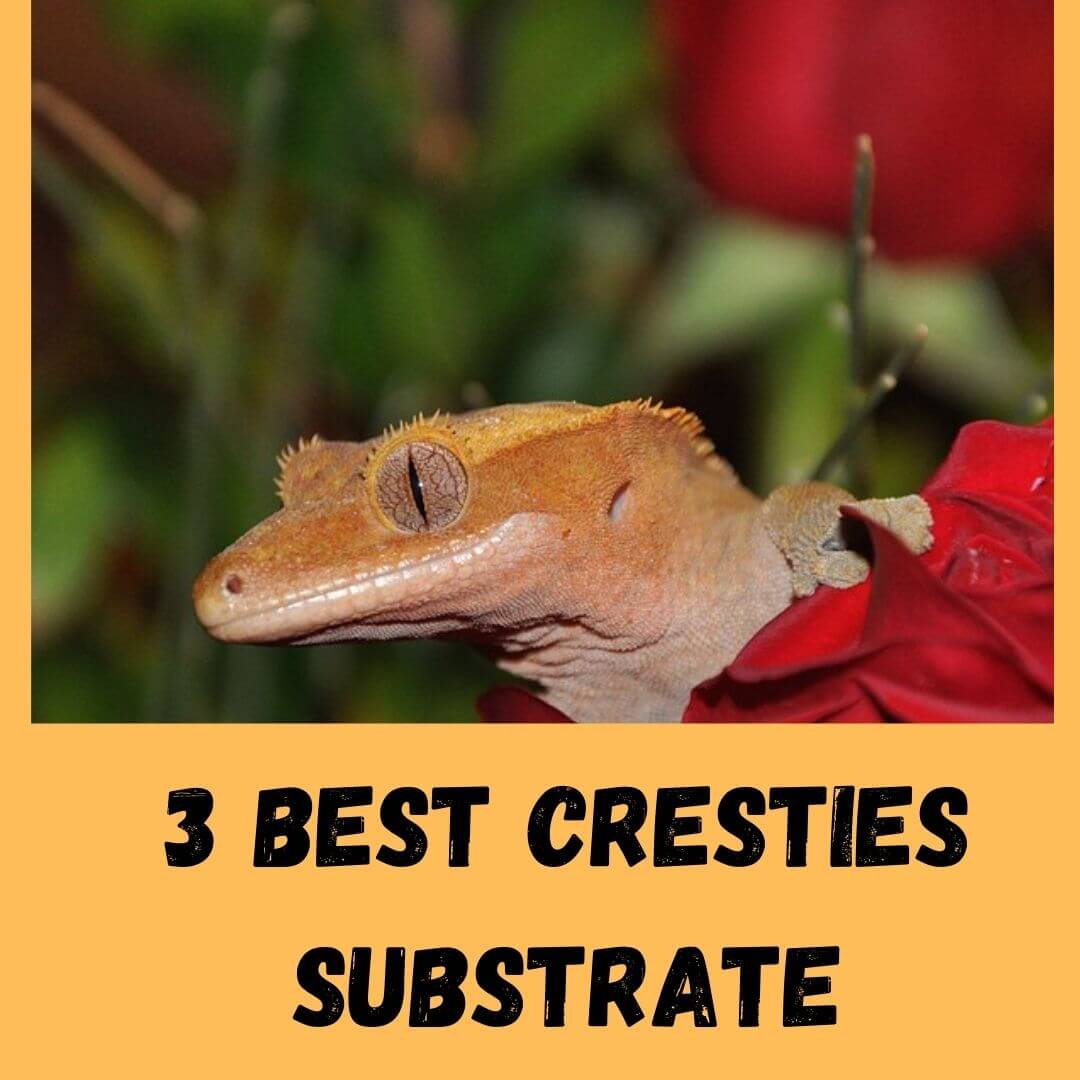Do you know what kind of substrate is ideal for crested geckos? If not, then here, I will guide you through the Best Substrates For Crested Geckos that don’t retain humidity.
Crested geckos are natives of South New Caledonia, so they do not like substrates with too much moisture. A small error can lead to ailments like impaction. It is not advisable to use cheap alternatives like wood saving because it could be consumed by your cresties.
Thus, many options are offered at a reasonable cost. Most substrates work well for reptiles; however, not all are suitable for treating crested geckos. In this article, we’ll guide you in choosing the most suitable habitat for geckos with crested crests. So, without wasting your time, let’s start.
Post Contents
Why Substrates Are Important For Crested Geckos?
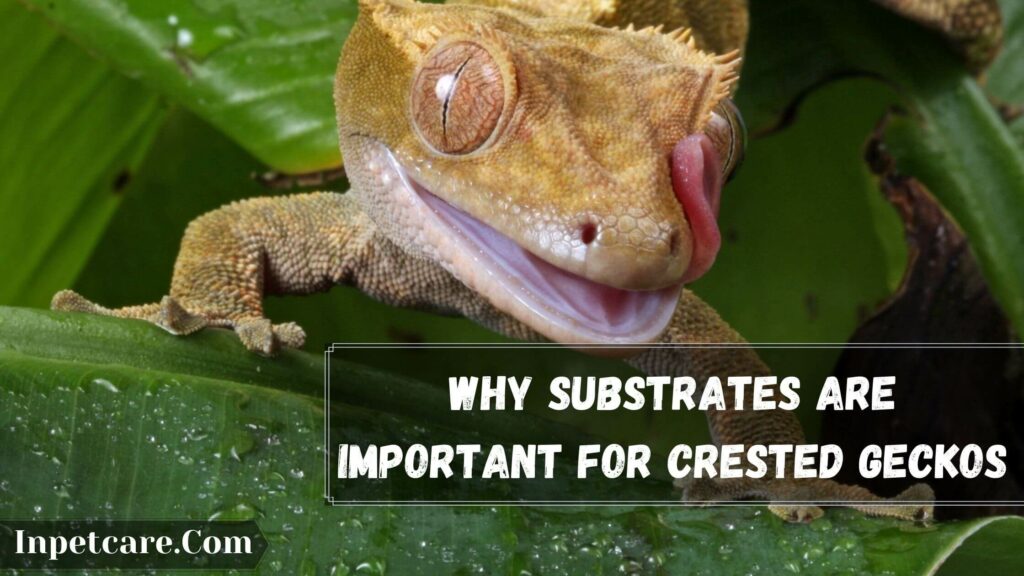
Substrates are vital to your crested gecko because it is a place to hide and serves as the flooring for the animals. When choosing the appropriate substrate, seek advice from a professional vet or consult an entire group of owners of crested geckos on which kind of substrate they prefer.
Avoid arguing because it could result in you ending with a heated discussion with that group of owners. Substrates are indeed a huge source of contention within the world of cresties.
Beyond the tank selecting the right substrate is an important decision that you’ll have to make to ensure your crested geckos’ happiness and well-being. Suppose you’re not aware that geckos that are crested without the right substrates experience stress.
This can leave your crests susceptible to many ailments. If you’re looking for an appropriate substrate, you’ll find many alternatives. The majority of them aren’t ideal for crested geckos.
The tank’s purchase and equipping with a particular substance may seem to be a major undertaking, but it’s not going to be a difficult job. I guarantee you that substrates will significantly impact the health of your crested geckos and their lives.
Since your crested gecko is likely to live its entire existence inside its enclosure, the tank’s shot is reflective of or resembles the conditions of the outdoors. When selecting a substrate, it is not to be taken lightly.
The aim is to choose the right substrate constructed from comfortable and easy-to-maintain materials. If you acquire the wrong type of substrate or buy it without doing research, you’ll be left with the risk of creating a highly unsafe and unhealthy habitat for your crested geckos.
Keeping your crested gecko secure and well-being is the highest priority. So, the proper material for your distinctive gecko will accomplish this. Let’s look at five of the best species of a crested gecko.
3 Best Substrates For Crested Geckos
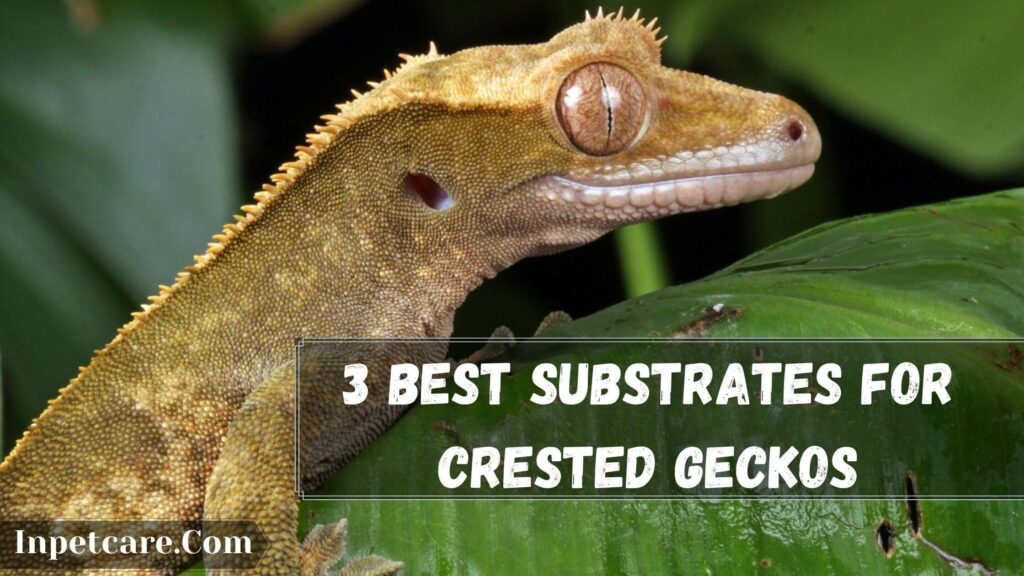
1. Shelf Liner
This is an exceptional choice for those seeking something simple and quick. It isn’t necessary to scrub the substrate more often than once a week. If you’re strapped for time and want to add some flair to the tank of your crested geckos, then this self-liner could be the best option.
You can then customize your tank’s crests by adding tiles or any other design you want. It’s a brand new find among people who love crested geckos. It’s not only an affordable option, but it is also simple to clean. Additionally, it’s a fantastic alternative to the tanks of cresties as it will last for a long years before being replaced.
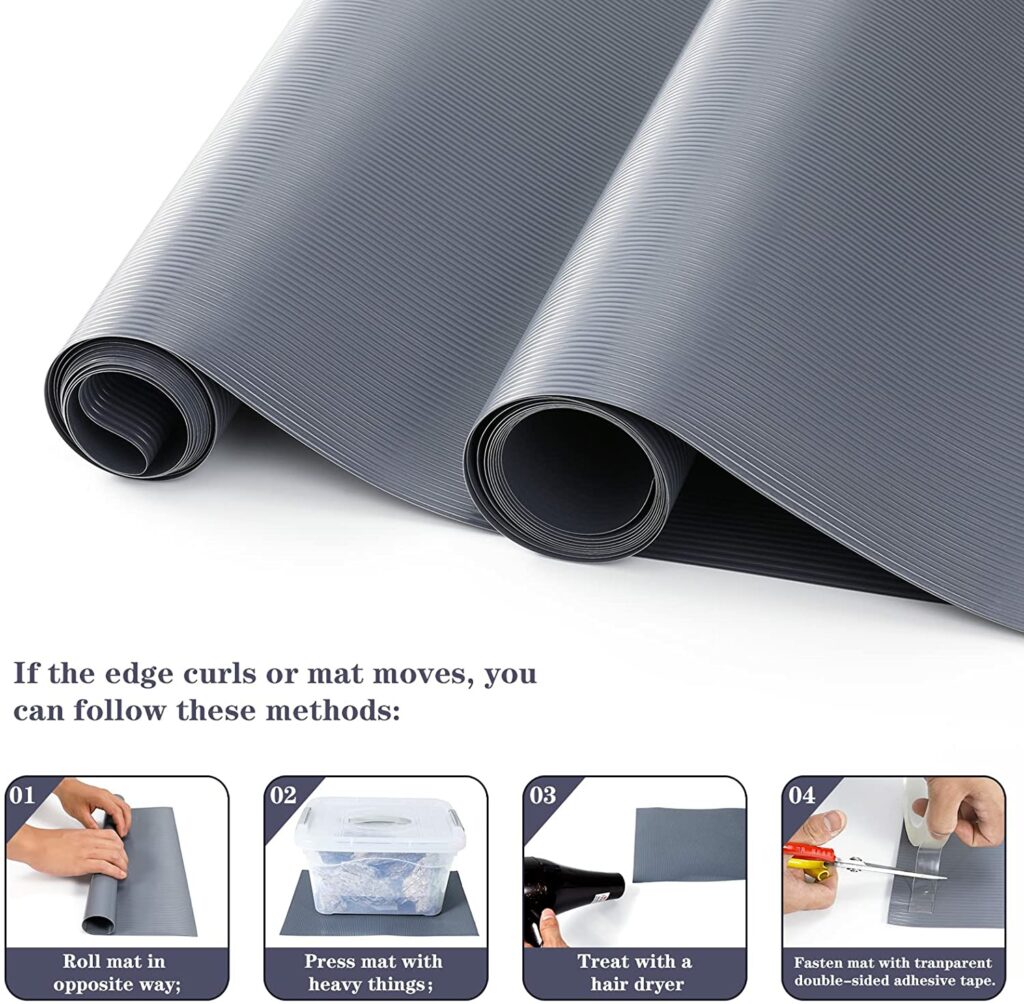
2. Carpet
If you’re a newbie or novice who wants to avoid any health risks, then go with this. Reptile carpets are our best choice for the best-crested geckos’ habitat. Since this carpet is durable, it is safe to be worried about your gecko inhaling or becoming upset by it.
There is no reason to be concerned about this carpet inside your gecko enclosure. It can also be cut to fit any size tank. It is easy to customize your crested gecko tanks with this carpet. Most customers’ only downside and main complaint about the product is that it’s not the easiest to clean.
If you’re planning to go for the carpet option, I suggest you have two of these available so that you can swap one for the other while cleaning. If you want your carpet to smell fresh and the risk of bacterial growth to the minimum, you’ll require spot cleaning every time you can.
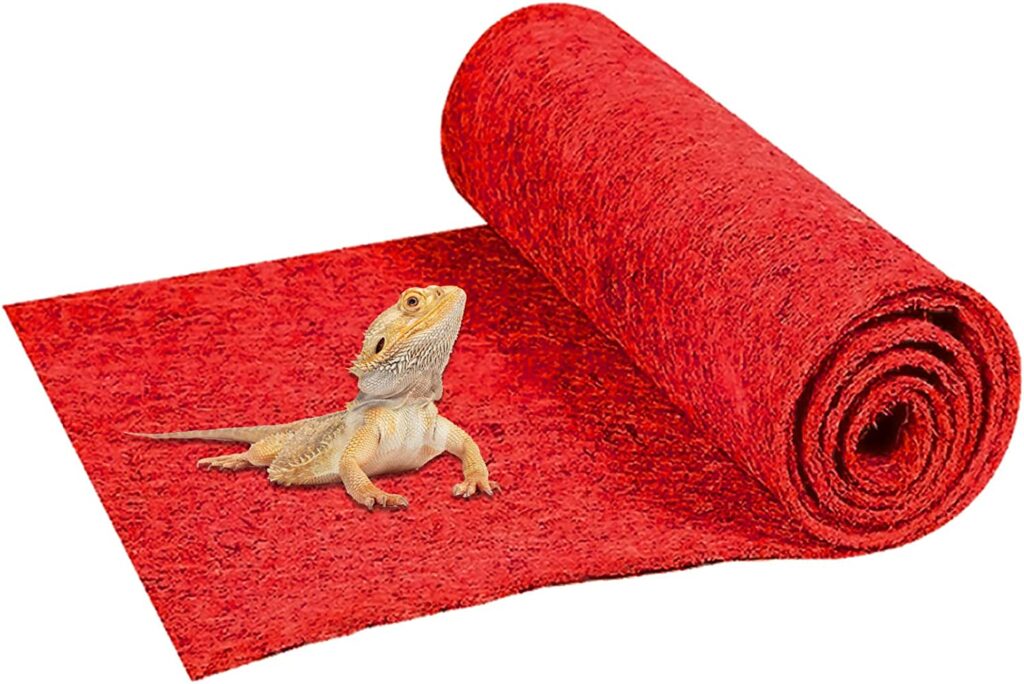
3. Tiles
Tiles aren’t just inexpensive; they’re also easy to maintain and never need to be replaced. They can be used to build any tank with cresties, regardless of whether it’s made from slate, linoleum, or ceramic.
Another benefit of using tile is that it helps keep the claws of your crested gecko trimmed. So, if you don’t like cutting the nails of your geckos, then this choice will attract your notice. There are some disadvantages to using tiles as substrates within your enclosure for crested geckos.
If there’s not enough space for a crested gecko to climb on, they’re bound to be constantly on the tile time. If tiles become slippery, you can apply a non-toxic adhesive and some topsoil for traction.
If tiles seem slick for crested geckos to walk on, think about using topping soil or even Sand with a non-toxic adhesive to make it grittier and add a fraction. It is recommended that you attach the Sand to the tile if you are trying to avoid the possibility of impaction.
Do not coat the entire tile with the topsoil or Sand in totality. The majority of sizes of the cresties’ tanks are determined off the side. Always check the inside before cutting the tiles to be set.
Make sure to choose a tile that doesn’t reflect light or heat. Be aware that the crested gecko flooring should never be cold to the touch.
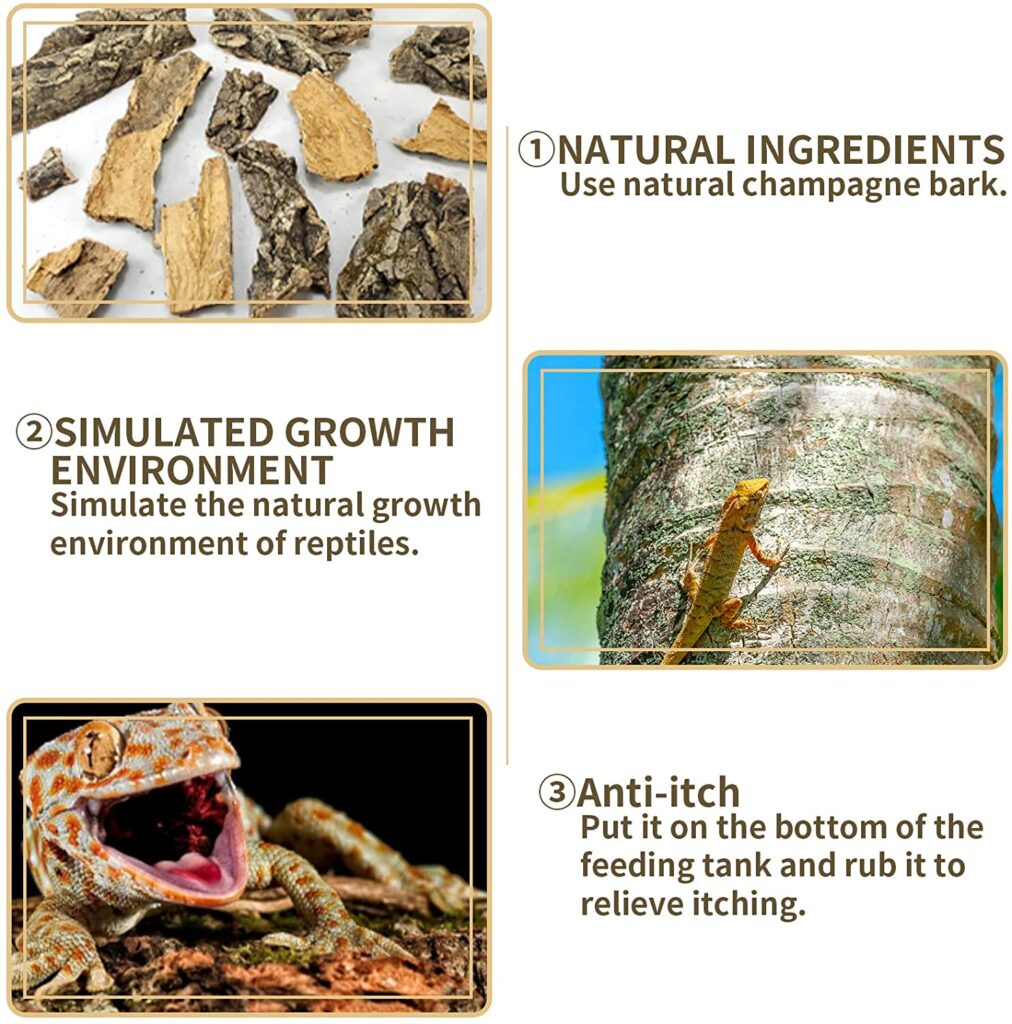
Interesting Further Reading
- Do Crested Geckos Change Colors? 6 Reasons Why?
- What Can Crested Geckos Eat? 7 Safe Foods+ 3 Tips
- What Vegetables Can Crested Geckos Eat? 11 Safe Vegies
What Substrate For Crested Geckos To Avoid?
- Sand. Sand is among the most dangerous substrates you could ever utilize since it poses an extreme danger to your health and the safety of those with crested geckos.
The crested geckos are at risk of taking in loose particles of substrates, and Sand is a sticky substance that sticks to everything. Should your gecko with a crested gecko face happen to consume Sand, it may cause harm to its teeth or throat?
Instead of using it for a substrate, please use it to enrich your habitat, such as putting it in a digging container to keep your geckos crested.
- Wood Chips. Like any non-permanent substrates, these woodchips may cause your crested gecko to have impaction issues when ingested. Another issue that wood saving can cause is the oil they release.
- Potting Soil. Potting soil can be exactly as harmful as Sand for crested geckos. The majority of potting soils are treated with fertilizers and other chemicals that make it dangerous for the crested gecko to consume.
- Gravel. You may be surprised to learn that gravel can be a better alternative to wood shavings and Sand when it comes to consumption. It’s nothing more than tiny pieces of Rock that can appear like food to geckos with crested geckos heads. If your crested gecko does end up eating one, it could cause a choke.
- Hay & Moss. Both are excellent for small areas of privacy, such as hiding boxes, but are not ideal as a substrate for the whole enclosure. Hey, and moss can retain moisture, which can increase mold’s growth, causing discomfort to your crests.
Conclusion
You should now know the best and wrong substrate for an enclosure for crested geckos. If you found this article useful in helping you understand which substrates suitable for crested geckos work most practical, you should consider sharing it with others.
This information could aid a few individuals in using the correct equipment for crests. One share could keep a pet from impaction. I did my best to provide you with all the details about what substrate is the best for the crested gecko. You can also read our other posts on care for crested geckos.

94% of pet owners say their animal pal makes them smile more than once a day. In 2007, I realized that I was made for saving Animals. My father is a Vet, and I think every pet deserves one. I started this blog, “InPetCare”, in 2019 with my father to enlighten a wider audience.
